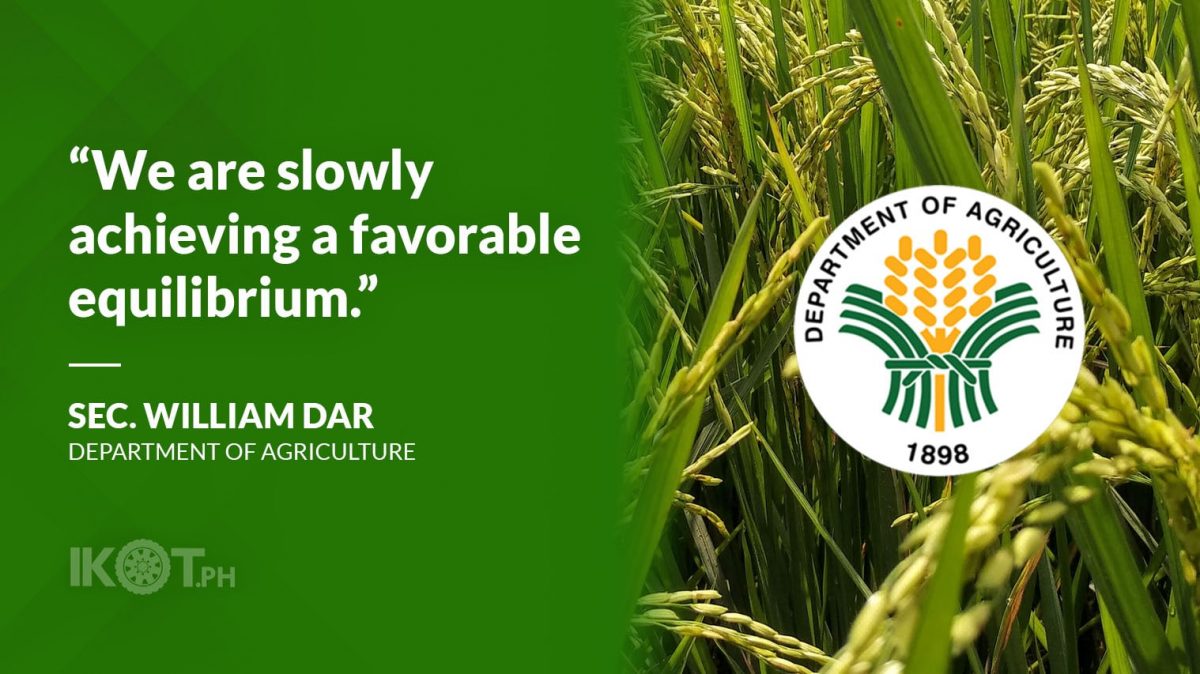After harvesting a record rice crop in 2020, the Department of Agriculture (DA) is eyeing back-to-back bountiful harvests, buoyed by the biggest palay yield to date for the first quarter (Q1), besting the previous high in 2018 Q1.
“We are pleased to report that the country’s rice farmers harvested a total of 4.626 million metric tons (MMT) for the first quarter of 2021, 8.6 percent (%) more than in 2020 Q1, and erasing the record harvest in 2018 Q1,” Agriculture Secretary William Dar said.
“This record first-quarter yield further boosts our confidence to hit, or even surpass, the 20.4-million metric ton palay production target we set this year.”
“This record first-quarter yield further boosts our confidence to hit, or even surpass, the 20.4-million metric ton palay production target we set this year, barring strong typhoons and other natural calamities,” Dar stressed.
“We therefore commend millions of our rice farmers, and thousands of local government technicians and leaders, and industry stakeholders nationwide for this achievement. We also appreciate the efforts of our ‘OneDA’ team for vigorously implementing the various interventions that led to the improvements in yield,” the agriculture chief added.
For his part, Director John de Leon of the DA’s Philippine Rice Research Institute (PhilRice) said the production growth was due to improvements in both areas harvested and yield. Area harvested increased by 4.53%, while yield grew by 3.87% over the same three-month period last year.
“Area harvested for rice expanded from 1.10 million hectares (ha) to 1.15 million ha, while yield went up from 3.88 mt/ha to 4.03 mt/ha. Overall, area harvested contributed 54% to the incremental first quarter production, while the share of yield was 46%,” de Leon said in his report to the agriculture head.
The first quarter growth in palay output was observed in both irrigated and rainfed areas, he added.
“This only shows that our palay farmers are confident to continue planting rice.”
De Leon said the growth in area harvested can be attributed to the above normal rainfall due to a series of typhoons in the last quarter of 2020, which enabled farmers to do a quick turn-around planting.
“This only shows that our palay farmers are confident to continue planting rice, contrary to what detractors were peddling at the start of the implementation of the changes in the country’s rice policy,” Dar noted.
Meanwhile, he said they also expect a more stable market for rice this year, despite the challenges due to the COVID-19 pandemic, thanks to the massive funding allocated to the industry under the Rice Competitiveness Enhancement Fund (RCEF), complemented by the DA banner national inbred and hybrid rice program, and rice resiliency project.
“We are slowly achieving a favorable equilibrium, wherein consumers have access to affordable rice, while our farmers reap bountiful harvests and earn bigger incomes as a result of yield improvements and stable prices of palay,” Dar concluded.

